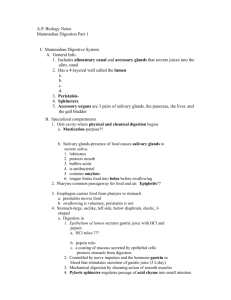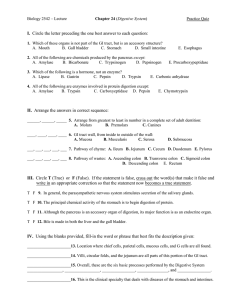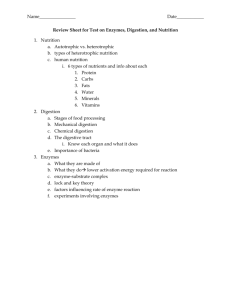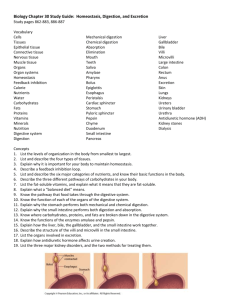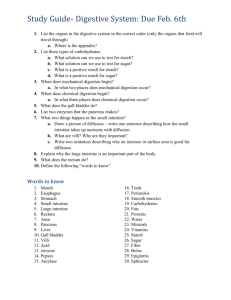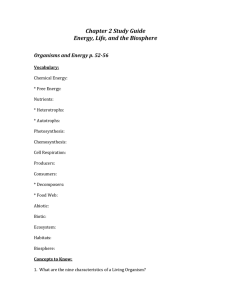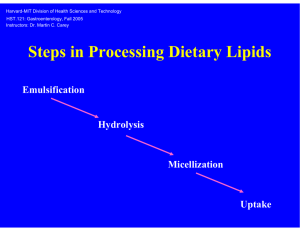Mechanical and chemical digestion
advertisement
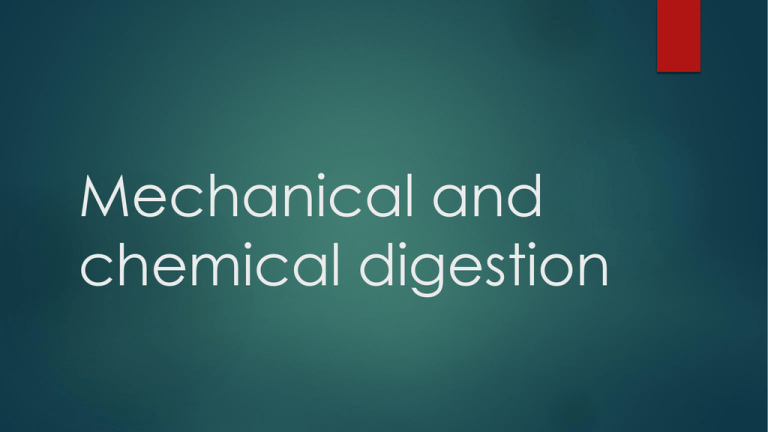
Mechanical and chemical digestion What is Mechanical Digestion? Mechanical digestion: the movement and breakdown of food (for example, tearing, smashing). There are two basic types of mechanical digestion. • Mastication: chewing begins the process of breaking down food into nutrients. • Peristalsis: is the involuntary contractions responsible for the movement of food through the esophagus and intestinal tracts. Watch this video clip http://highered.mheducation.com/sites/0072495855/student_view0/ chapter26/animation__organs_of_digestion.html What is Chemical Digestion? enzymes are needed to chemically digest the large molecules: carbohydrates monosaccharides lipids fatty acids & glycerol proteins amino acids once digested, the nutrients can be absorbed the other types of nutrients (vitamins, minerals, water) can be absorbed directly without being digested The mouth- salivary glands secrete saliva saliva contains: lubrication mucins for amylase for digesting starch the chewed bolus is pushed into the pharynx and swallowed Stomach the stomach is lined with millions of gastric glands parietal cells: secrete hydrochloric acid (pH = 1 to 2) The acid kills some bacteria, denatures protein, breaks down tissue, activates the enzyme pepsin chief cells: secrete pepsinogen – which is activated by the acid to form the enzyme pepsin pepsin digests proteins into smaller polypeptide chains Small intestine long, thin, muscular tube (7 m long) three major sections: duodenum – receives secretions from pancreas and liver jejunum – most digestion occurs here; some absorption ileum – most absorption occurs here Duodenum bile: produced in liver, stored in gall bladder composed of salts, pigments and cholesterol (NOT an enzyme!) emulsifies fats: physically breaks down large fat droplets into smaller fat droplets digestive enzymes: produced in the pancreas and sodium bicarbonate: from pancreas neutralizes acid, raises pH to 8 activates intestinal enzymes Jejunum & Ileum secrete more digestive enzymes from intestinal glands also is the major site for nutrient absorption How Long Does it Take to Digest Food? In healthy adults, this process can range from 24-72 hours but the average is about 36. Typically, after ingestion, food remains in the stomach and small intestine from 6-8 hours. The large intestine is capable of holding undigested food waste for days.

